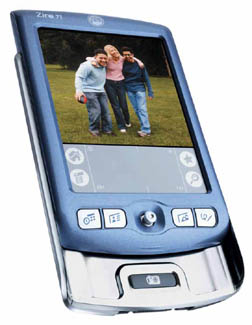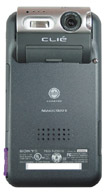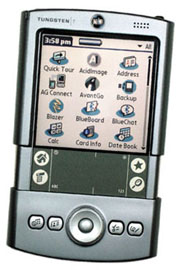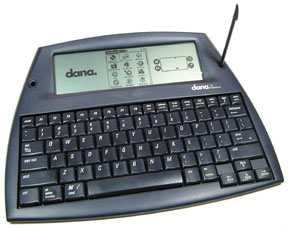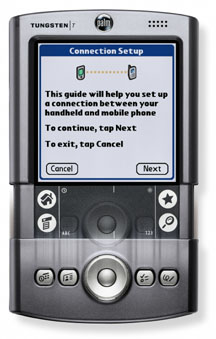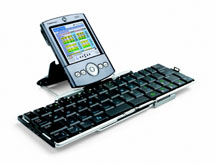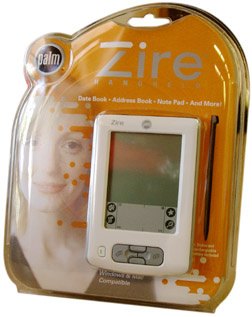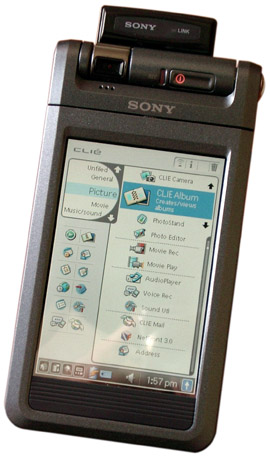|
|
 Warning on Palm.net service
May 21, 2003
In Pen Computing Issue 48, I was pretty bullish on the Palm i705 and the Palm.net service. It's still a decent service, but far from perfect when it comes to billing issues. I already mentioned the trouble I had with the switch in that article, where I went from the Palm 7x to the i705 and didn't get upgraded to allow for the increased usage that push email service logically entails. But I'd just like to warn users that they should be careful when cancelling their accounts as well. Palm's Service Agreement warns that "Termination of the agreement shall not relieve you of any obligations to pay accrued charges, including any prorated charges accrued for the billing cycle in which this agreement is terminated. The payment in advance for the next month's service level is nonrefundable." What this means in plain English is that if you cancel, the cancelation is immediate, and if you just paid three days ago, you're screwed out of the rest of the month's service. If by chance your payment just occurred within 24 hours, you should qualify for a refund, but only then. For the record, I've cancelled the Palm.net service because I've switched for the time being to downloading email when needed from the Palm Tungsten T via my Sony-Ericsson T68i. It's not ideal, and I do miss the push email, but I really like the combination of the two devices, as well as the idea of getting only one bill for my data and voice services. I'm hoping that my US$39.95 for 20MB of data is sufficient for my needs. The good news is that AT&T's GPRS network in our area is built out far better than Cingular's Mobitex network, and I can get my email on both my Tungsten T or Apple iBook via the T68i from just about anywhere. Having looked at all the currently available options, this is my current choice as a good wireless solution, mostly because it includes the option of Internet access via both a handheld and a notebook with only one bill. Only unlimited data or push (SMS is not quite the same) could make it better. The T68i is also not the greatest voice phone, but Bluetooth telephone options are looking increasingly limited. The next question is the survival of Bluetooth in the marketplace, since the two latest Palms omit it, and only a few new phones offer it. -Shawn Barnett New reviews posted
May 20, 2003
Reviews on Palm's three new products have been posted. These three are exciting products, each offering slightly different feature sets for the varying Palm user market. Corporate and business users will gravitate toward the two new Tungsten devices, but all should look at the Zire 71, because it offers fantastic features for the typical Palm user who doesn't need wireless. To see them, click on these links for the Tungsten W, Tungsten C, and Zire 71. 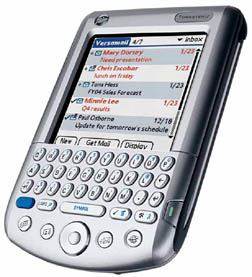
Palm Tungsten C, Zire 71 raise the bar
April 23, 2003
Palm SG announced two Palm products today, first of which is the Tungsten C, aimed at better penetrating the corporate market. Its chief weapon in breaking through what Palm SG sees as a thick barrier is WiFi. The Tungsten C has WiFi (802.11b) built in, and its look is familiar: it appears to be none other than a Tungsten W without its antenna. It has the same keyboard and exterior shell, and the screen appears to be about the same, until you turn it on. When you do, you'll see Palm's first backlit transflective TFT color screen. It also appears in the new Zire 71, and it is dazzling. The brightest display we've seen on any Palm OS device, and we don't have a Pocket PC here in the office that is its rival. Contrast is also excellent. But it goes deeper than that. We're talking about Intel Inside: a 400MHz XScale PXA250, and 64MB RAM to go with it. Something else is left over from the Tungsten W as well, and that's a monaural headphone jack. They didn't intend it for music playback, but for voice recording; and developers are said to be working on VOIP (Voice Over IP) solutions, which should start appearing in June. This would enable voice communications over WiFi. A new version of VersaMail is bundled, with a two-line email display option so that users can see the email address and title. It has the same 1500 mAh Lithium Ion battery as the W. The literature also describes a portable battery pack that connects via the Universal connector, available for US$99.95 (this is also usable for all Palm Universal connector handhelds, shipping in May). The C also integrates DataViz Documents to Go Pro 5.1 onto the device, as well as browser and Palm PhotoView. A bundle of software includes various IP connectivity applications, including one that allows you to print directly to network printers (PrintBoy, from Bachmann Software). Perhaps most interesting is this, which we have yet to see, taken directly from the press release: "For mobile and small- or home-office professionals who need behind-the-firewall access to their networks, the Tungsten C handheld ships with a built-in PPTP (point-to-point tunneling protocol) virtual private network (VPN) from Mergic. This solution enables individuals to securely check email, browse the Web or company intranet and wirelessly synchronize with their desktop to back up information and manage email." The Tungsten C weighs 5.82 ounces, and accepts SD, SDIO, and MMCs. If you thought the T was fast, wait until you see this thing. Available in stores and online May 5 worldwide. US$499. www.palm.com
The new Zire 71 shares only its relative shape and name with the original Zire. In fact, it integrates so many advanced features, it bests the Tungsten T in some ways. It runs a 144 MHz OMAP 310 (a processor with the same ARM 925 core, but without the DSP of the OMAP 1510 found in the T) and includes 16MB RAM. The hidden feature may be the most compelling, a 640 x 480 digital camera that is revealed when you slide the front of the unit up. This mechanism is tight and smooth, offering a feel of quality. A new 320 x 320 transflective TFT makes operating the Zire 71 almost surreal, with its vibrant color and excellent contrast. It has a five way joystick where a simple toggle used to be, and an SD slot for expansion. Real Player is bundled for MP3 playback, and video playback via Kinoma Player is identical to the Tungsten T, only with a far brighter screen. New to the entire Palm OS line is Graffiti 2, a version of Jot, that replaces the original Graffiti so many have come to know. The bundled Palm Desktop has also been improved, offering a place to sync photos, and a new Quick Install program is included. The device has a new set of sounds, with a softer, more discrete click on each tap, and softer tones all around. It comes with a case, cradle, charger, and bundled multimedia software. It weighs 5.3 ounces, measures 4.5 x 2.9 x 0.67 inches, and retails for US$299. www.palm.com Preview: PDA or Camera? Sony's new NZ90
February 17, 2003
Sony's NZ90 is quite an amazing achievement, integrating their hot 200MHz Palm OS-based PDA and its incredible interface with a 2.0 megapixel digital camera that can capture stills or video; it even has a flash. The possibilities are exciting. Come see our preview of this US$799 multimedia powerhouse. Palm Tungsten T Review
November 13, 2002
As promised, here's the Tungsten T review. Palm has not been standing still, as is revealed by this feature-rich, innovative, and speedy PDA. Its slide open design offers a full-size PDA experience in a collapsable package, and its new 5-in-one dial make for speedier menu navigation. With Bluetooth built in, the SD slot is free for memory expansion or SDIO peripherals. Running Palm OS 5 on a Texas Instruments OMAP processor, it's very fast, satisfying to use. Come read the rest in our review. -SAB AlphaSmart Dana Review
November 12, 2002
If you haven't heard of it, you're going to want to know about the AlphaSmart Dana, a ruggedized keyboard-based hybrid that runs the Palm OS. Besides the distinctly un-Palm-size shape and notebook-sized keyboard, the Dana has a wide monochrome screen, two SD slots, two USB ports, 8MB RAM, a 33MHz Dragonball processor, and weighs only two pounds. This compelling and radical device that was designed for students may find more uses than its creators envisioned. Read the review. -SAB
Palm introduces Tungsten devices
October 28, 2002
Palm Inc. introduced their new high-end next-generation handhelds, one of which is available for purchase now. The first device runs Palm OS 5 and uses a 144 MHz Texas Instruments OMAP1510 processor. Called the Tungsten T, it is available for purchase today. It has a smaller footprint than any other Palm OS device, due to its slide-open design. Using the new navigation disk, users can access many programs without using the Graffiti area, though that remains a quick pull away with the new design. Pulling the device open turns it on, by default, and it can be made to shut off when closed. Bluetooth is built in, and Palm has made strides in making Bluetooth setup and use far easier than the first SD card version of their software. Palm and Sony Ericsson worked together to make setting up a relationship between the Tungsten T and a T68i fairly easy. With Bluetooth built in, the SD slot is once again open for storage and peripheral expansion. Voice recording is also built in, with a side-mounted button for quick access. With a 128MB card, one can record more than 450 minutes of audio. Compatibility with older databases is good, and most OS 4 programs should run well, since the entire operating system is written to make the ARM-compatible OMAP processor emulate a 68000 processor. Performance is snappy, faster than we've seen with the Palm OS. Weight is 5.5 ounces, and the unit comes with16MB RAM (14MB actual storage capacity). The screen is good, and the interface sports all new icons for the incredible 320 x 320 resolution screen. The device also has four fonts instead of three, all of which display smoothly on the high res screen. Our preliminary opinion is that the Tungsten T is a compelling upgrade; in most ways it's the first big leap for the Palm platform, since most past offerings from the company have been more evolutionary. US$499. 
Also announced but not released was the Tungsten W handheld, a wireless device that will replace the Palm i705. GPRS-based, it is primarily billed as a data device that can also make phone calls. Unlike the Graffiti-based Tungsten T, the W has a keyboard, but it also employs the new "5-way" navigation disc. This device, however, does not run Palm OS 5, because it has a 33MHz Dragonball processor. Instead it runs Palm OS 4.1.1. It does feature a Texas Instruments TCS2100 baseband processor for advanced GSM/GPRS performance. Palm says the device, as a result, offers one of the fastest data-transfer rates available over GPRS. It includes Palm's VersaMail application (as does the Tungsten T) for email access, and also offers Web browsing and SMS software applications. Though it doesn't have the powerful processor of the T, the W does have the 320 x 320 color screen with the same look and feel as the T. The phone is only accessible using the headset attachment, there is no mic or speaker on the device. Users can make a call while accessing programs on the device, including the sending of SMS messages. The GPRS radio is tri-band, enabling easy international travel.
The Tungsten W will be available in the first quarter of 2003 for US$549. Both the Tungsten T and Tungsten W use the same Universal connector that all recent Palm-branded products have used, so many peripherals will be compatible, as will the cradles. At left is the slim keyboard also announced today, designed by the same folks who made the Stowaway Keyboard. www.palm.com -SAB
Palm launches first product in Zire line
October 7, 2002
In a move to both return to its roots and differentiate product lines, Palm Inc. today launched the first product in its new Zire family of handheld computers. Aimed directly at the first time buyer, the Zire is simple and light weight; lighter, in fact, than any Palm OS product to date at 3.8 ounces. Unlike previous products which were shipped in boxes 10 to 20 times the size of the device itself, the Zire is packaged in a hanging or free-standing blister pack, designed for store shelves. With 2MB RAM, a monochrome display, a 16MHz Dragonball processor and a rechargeable Lithium Ion battery, it's equipped to handle basic data tasks with as much aplomb as the Palm III, but with slightly better-thought-out integration. While it will be a step back for many current Palm users, it will offer plenty of power for someone just seeking to manage their schedule. Zire is not the only product family announced last week, however. Zire will be the consumer line and Tungsten will be for the business user. US$99.
Sony announces first Palm OS 5 device
October 2, 2002
Sony's new NX70V really revs up the popular swivel-screen CLIE, taking it from a 66MHz SuperVZ to a 200MHz ARM processor. The new device runs Palm OS 5, slightly modified to make it a Sony original. The new application launcher is none other than stunning, operating with either the jog dial or stylus. When used with the jog dial, applications scroll smoothly up or down the screen. Unlike the NR series, the virtual Graffiti area can be moved out of the way in more programs, including the application launcher. The NX70V also comes with an improved digital camera, capturing 640 x 480 stills, as well as full-motion video. Along with the built-in MP3 player, the new CLIE finally includes voice recording as well, with the ability to capture up to 535 minutes (8.91 hours) of audio on a 128MB Memory Stick at 8KHz sampling frequency. Voice recordings can be programmed as alarms, so your sweetheart's voice can awaken you on while you're travelling (or something less corny).
The only major physical modification was necessary to add 802.11b wireless to the device. A large port was added to the mold, allowing an optional CF-sized Wi-Fi card to be inserted on the back. Sony is quick to point out that this is not an actual CF slot, and makes no assertion that it might become one in the future. The Memory Stick remains the external storage standard for the CLIE line. They've also included a new browser, which is able to view most Web pages full screen. Combined with the 802.11b connection, the browsing experience is impressive. CLIE Mail can send and receive images, voice, and even movies generated on the device. The NX70V comes in a new robotic-looking gunmetal gray or the older champagne. Both have a magnesium body. With all that power, the NX70V only has 16MB RAM. Users will have to rely on the Memory Stick for many purposes, but thankfully that's a pretty fast interface, and they include the CLIE Files application for quick swapping between card and RAM. Suggested retail will be US$599. Optional accessories: CLIE Wireless LAN Card, US$149.99, CLIE Speaker Cradle (for music, voice playback), US$99.99. The product is available for preorder on the SonyStyle website, and is expected to ship in early November, according to company representatives. Informal report on PalmSource Open House
October 1, 2002
PalmSource had their open house last week, and I put together a small, informal report on the event. It was a casual affair that blossomed into a small PalmSource Expo. There were a few products that caught my eye, so it might be worth a read to get a glimpse of products like the Samsung i330, the Acer S60, and the AlphaSmart Dana, among others. (picture at right: David Nagel, PalmSource CEO, chats with Donna Dubinsky, Handspring CEO, at PalmSource Open House.) -SAB | |||
|
[Homepage] All contents ©1995-2000 Pen Computing Magazine, Inc. All rights reserved. |
||||


